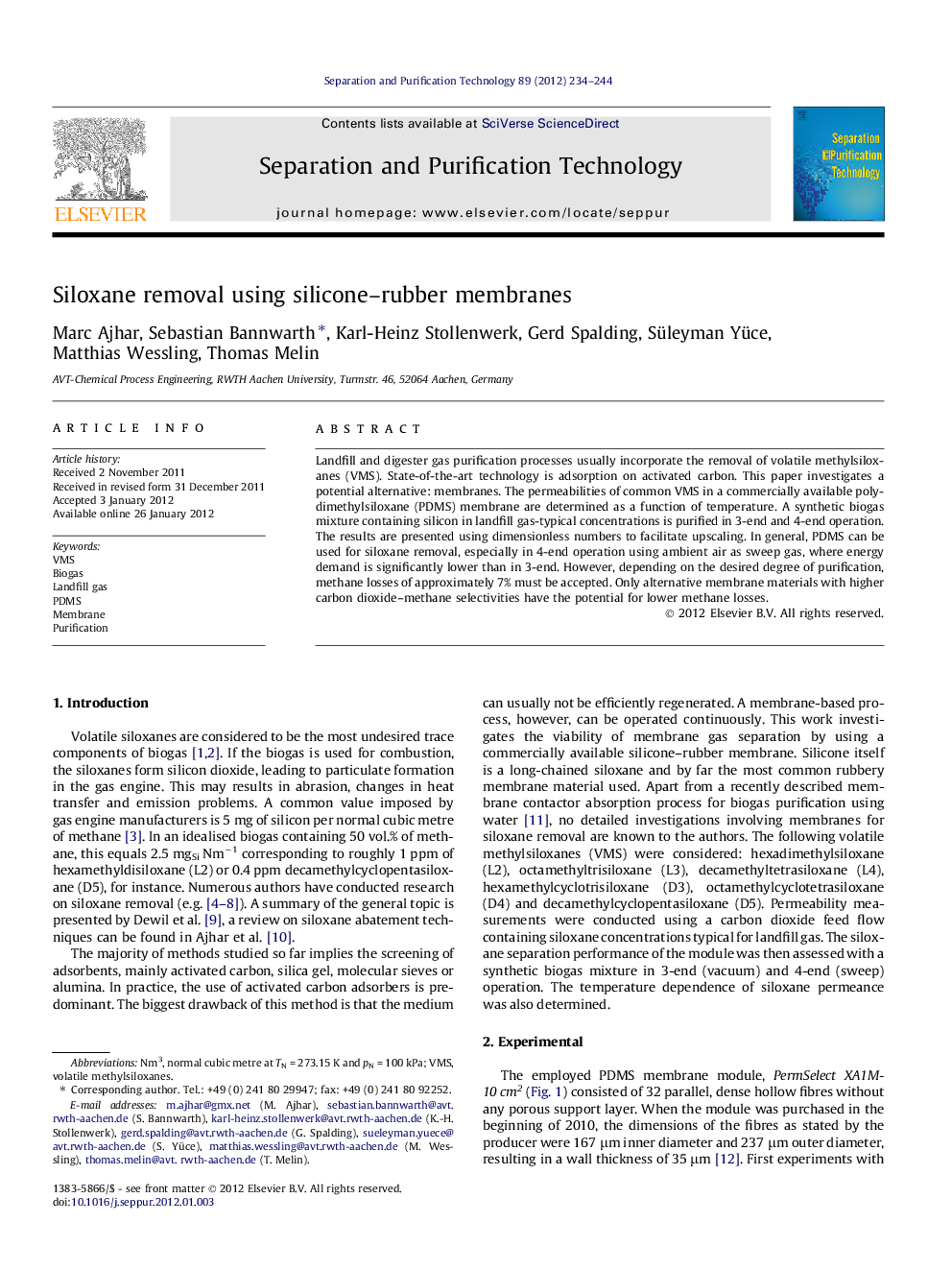| Article ID | Journal | Published Year | Pages | File Type |
|---|---|---|---|---|
| 642276 | Separation and Purification Technology | 2012 | 11 Pages |
Landfill and digester gas purification processes usually incorporate the removal of volatile methylsiloxanes (VMS). State-of-the-art technology is adsorption on activated carbon. This paper investigates a potential alternative: membranes. The permeabilities of common VMS in a commercially available polydimethylsiloxane (PDMS) membrane are determined as a function of temperature. A synthetic biogas mixture containing silicon in landfill gas-typical concentrations is purified in 3-end and 4-end operation. The results are presented using dimensionless numbers to facilitate upscaling. In general, PDMS can be used for siloxane removal, especially in 4-end operation using ambient air as sweep gas, where energy demand is significantly lower than in 3-end. However, depending on the desired degree of purification, methane losses of approximately 7% must be accepted. Only alternative membrane materials with higher carbon dioxide–methane selectivities have the potential for lower methane losses.
► Siloxane permeabilities in PDMS are between 9000 (L2) and 50,000 Barrer (D5) at 20 °C. ► Siloxane–methane selectivity in PDMS is between 13 (L2) and 76 (D5). ► Permeabilities were found to be slightly lower in 4-end than in 3-end operation. ► 4-End is significantly more energy-efficient than 3-end operation. ► Air can be used as sweep gas without reaching explosive limits.
